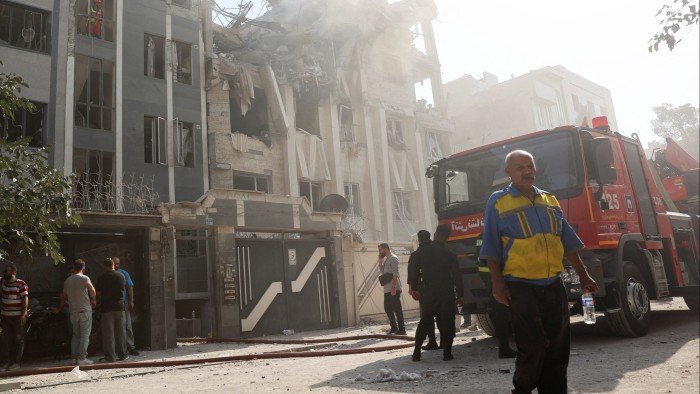Get free updates to stay in the loop
Just sign up for the Oil myFT Digest — sent right to your inbox.
On Friday, oil prices jumped significantly due to Israel’s air strikes on Iran, which raised concerns about supply disruptions in the area and triggered a shift towards safe investments.
The price of Brent crude, the global benchmark, increased by 5 percent to $72.88 in London, having previously surged by over 12 percent. Meanwhile, West Texas Intermediate, the US benchmark, saw a similar rise of 5.2 percent, reaching $71.56.
Michael Alfaro, chief investment officer at Gallo Partners, a hedge fund specializing in energy and industry, referred to the attack on Iran’s nuclear sites as a “dramatic escalation” in the ongoing conflict.
“We are facing the possibility of a long-term conflict that is likely to keep oil prices high,” he stated.
Israel’s strikes aimed at Iran’s nuclear program and military installations, resulting in the deaths of its two leading commanders. However, Iran claimed that none of its oil facilities were affected.
Global stock markets took a hit while gold, often seen as a safe haven, rose. Futures for the S&P 500 dropped by 1.4 percent, and the price of gold climbed 0.9 percent to $3,415 per ounce.
The energy sector faces several risks due to the renewed conflict.
The Strait of Hormuz, the channel that separates Iran from Gulf states, carries approximately one-third of the world’s seaborne oil supplies. Iran has previously threatened to block this route if attacked.
Some of the largest oilfields globally, located in Saudi Arabia and Iraq, are also vulnerable to Iran’s missiles and drones. In 2019, Iran was widely suspected of attacking Saudi oil facilities, which temporarily drove crude prices up.

Qatar, a major supplier of liquefied natural gas, relies on the Strait of Hormuz for its shipments to international markets amidst constrained global supplies.
Helima Croft, a former CIA analyst now with RBC Capital Markets, questioned whether the recent strike was just a minor military action, similar to what happened in the fall, or if Iran intends to target regional energy resources.
“The critical question is whether Iran aims to escalate the cost of this action by attacking regional energy infrastructure,” Croft commented.
US President Donald Trump has previously committed to keeping oil prices low to manage inflation.
In response to Russia’s full-scale invasion of Ukraine in 2022, the Biden administration released around 300 million barrels of crude from the US Strategic Petroleum Reserve, the largest emergency reserve in the world, to stabilize prices.
If oil prices continue to rise or if Middle Eastern supplies are affected, Trump might utilize the SPR, although he has criticized former president Joe Biden for depleting it to its lowest in 40 years. The SPR currently holds about 400 million barrels, significantly below its capacity of 727 million barrels.
Traders are also watching for any reactions from Opec+ oil producers. Saudi Arabia, a key member of the coalition, condemned the Israeli strikes on Friday.
This group, which includes Iran, has increased production recently but may face further pressure from the Trump administration to leverage its additional capacity to ensure adequate supply in the market.


